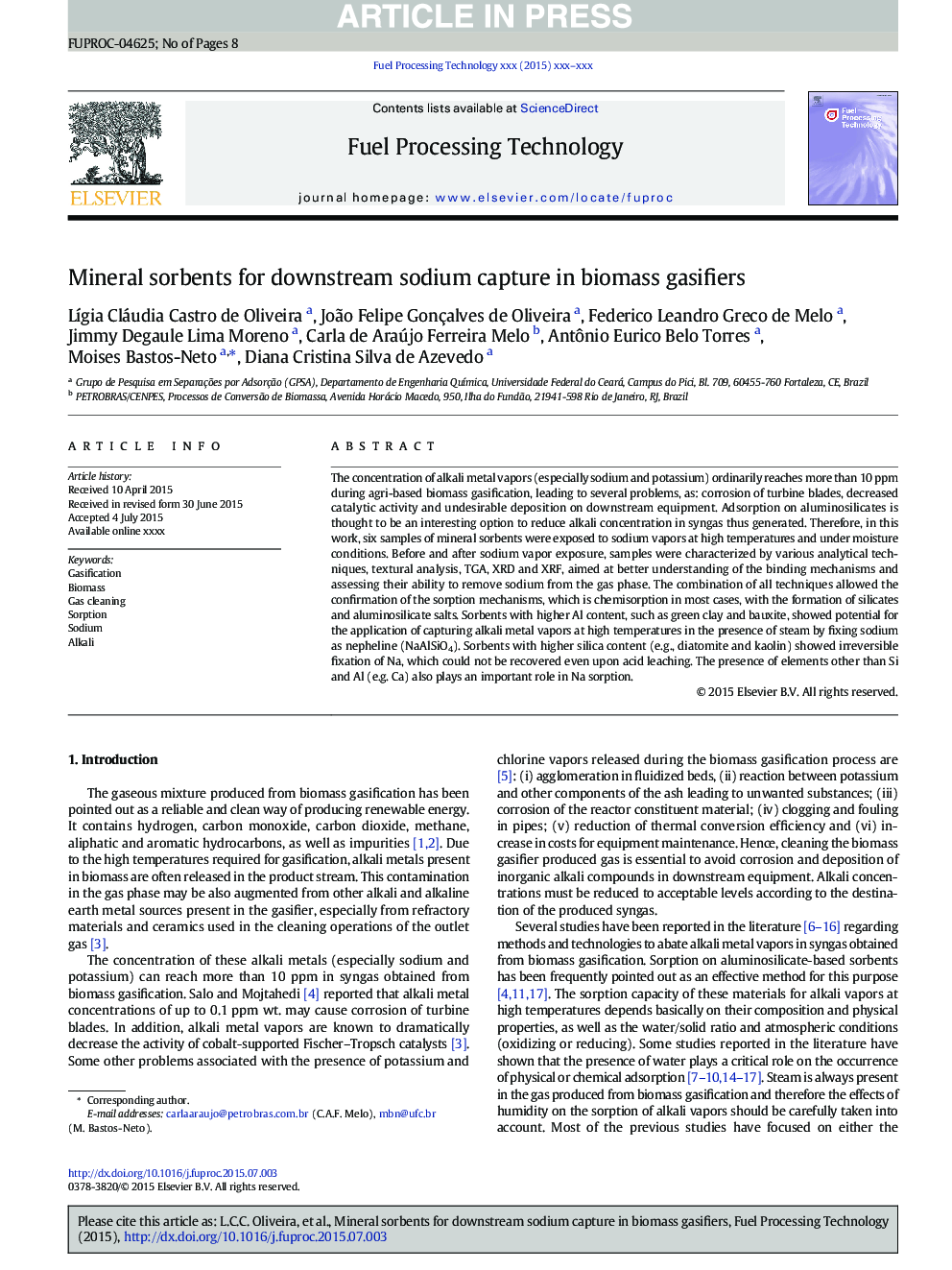| Article ID | Journal | Published Year | Pages | File Type |
|---|---|---|---|---|
| 6656939 | Fuel Processing Technology | 2015 | 8 Pages |
Abstract
The concentration of alkali metal vapors (especially sodium and potassium) ordinarily reaches more than 10Â ppm during agri-based biomass gasification, leading to several problems, as: corrosion of turbine blades, decreased catalytic activity and undesirable deposition on downstream equipment. Adsorption on aluminosilicates is thought to be an interesting option to reduce alkali concentration in syngas thus generated. Therefore, in this work, six samples of mineral sorbents were exposed to sodium vapors at high temperatures and under moisture conditions. Before and after sodium vapor exposure, samples were characterized by various analytical techniques, textural analysis, TGA, XRD and XRF, aimed at better understanding of the binding mechanisms and assessing their ability to remove sodium from the gas phase. The combination of all techniques allowed the confirmation of the sorption mechanisms, which is chemisorption in most cases, with the formation of silicates and aluminosilicate salts. Sorbents with higher Al content, such as green clay and bauxite, showed potential for the application of capturing alkali metal vapors at high temperatures in the presence of steam by fixing sodium as nepheline (NaAlSiO4). Sorbents with higher silica content (e.g., diatomite and kaolin) showed irreversible fixation of Na, which could not be recovered even upon acid leaching. The presence of elements other than Si and Al (e.g. Ca) also plays an important role in Na sorption.
Related Topics
Physical Sciences and Engineering
Chemical Engineering
Chemical Engineering (General)
Authors
LÃgia Cláudia Castro de Oliveira, João Felipe Gonçalves de Oliveira, Federico Leandro Greco de Melo, Jimmy Degaule Lima Moreno, Carla de Araújo Ferreira Melo, Antônio Eurico Belo Torres, Moises Bastos-Neto, Diana Cristina Silva de Azevedo,
